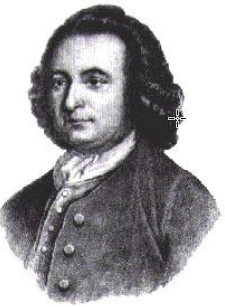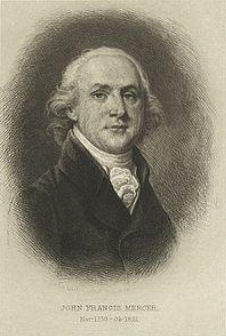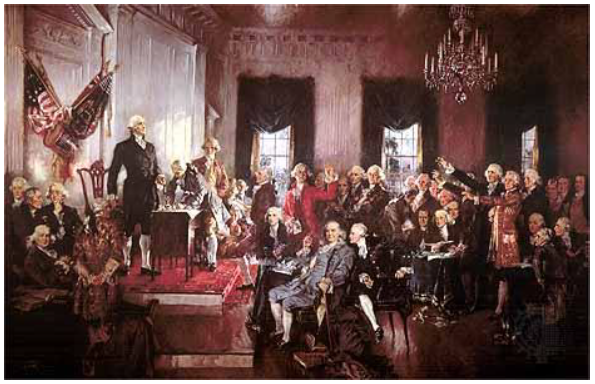Constitutional Convention
The Constitutional Convention took place in Philadelphia, Pennsylvania, from May 25th to September 17th in 1787. Following our country’s independence from Great Britain the new United States of America had continued operating under the Articles of Confederation (1777). These articles had been used throughout the Revolution and, while satisfactory in many respects, were intentionally left deficient in central authority for finances, defense and foreign policy. These shortfalls created great difficulties in national and international affairs. This convention was intended to revise the Articles of Confederation, but some delegates, such as James Madison, objected and thought a new government should be formed with a stronger national or Federal component. Stafford’s own George Washington was elected to preside over the convention and was the implicit leader of the Federalist faction.

Besides George Washington, two other delegates had Stafford ties: George Mason and John Francis Mercer. George Mason (IV) was born in Dogue’s Neck, then part of Stafford County. He grew up on Chappawamsic Farm. The farm was located behind today’s Hildrup’s Storage and Moving, off of U.S. 1. When he was older he studied at his uncle John Mercer of Marlborough’s library located on Marlborough Point. This library, the second largest in Virginia, provided Mason with a thorough grounding in the works of the Enlightenment, history, politics and law. Studying along with him was his cousin, John Francis Mercer, who had moved to Maryland.


During the Constitutional Convention, Mason represented Virginia while Mercer represented Maryland. Both cousins were among the 16 (almost all Anti-Federalists) delegates who refused to sign the document as it did not contain a “declaration of rights.” (Previously, in 1776, Mason represented Stafford at the Virginia Convention in Williamsburg. It was here where he wrote the drafts of the first declaration of rights and a state constitution. After alterations, the Virginia Declaration of Rights was adopted on June 12th.) Mason and a number of Anti-Federalists expected a constitution along the lines of the Virginia model – which protected the individual rights of the people and made government subservient to them, and weakened the central power of the national government.
Because of the opposition of the Anti-Federalists, the Virginia Ratification Convention in 1788 was far more contentious. As Washington, as president of the national convention, could not engage in the debates, it was left to James Madison (the primary drafter) to defend the Constitution. Ratification was opposed by Mason, Patrick Henry, Richard Henry Lee, and James Monroe. Madison finally was compelled to promise to submit a Bill of Rights as the first ten constitutional amendments in order to secure ratification (the final vote was 89 to 79).
On December 15, 1791, the Bill of Rights was adopted, based on Mason’s Virginia Declaration of Rights. Although the final Constitution and amendments embodied the best work of the founding fathers – in that it combined a functional government operating within the international nation-state system with the codification and protection of the rights of the people to be secure in their rights and protected from potential oppression by their governments at all levels.
Unfortunately, this struggle of Federalism and Anti-Federalism created and left a deep divide in American governance which would persist throughout our history. On the one hand, we needed a functioning national government representing the interests of the states (Union) and all of the people. On the other hand, we needed to protect the rights of the people and ensure their protection from the excesses or oppression (potential tyranny) of governments (Liberty). This divide would ultimately lead to the Civil War 73 years later.

